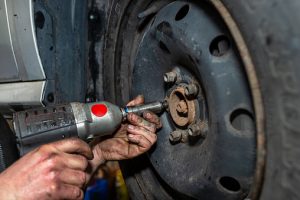Your car can now travel on air, much like the nation’s freight shipments do. Although air suspension systems have been utilized for many years in the trucking industry, they have only just begun to be used in commercial vehicles. The suspension systems are used in motorcycles, all-terrain vehicles, custom and performance cars, and even regular commuter cars.
Because of technological advancements, systems are no longer cumbersome, slow, and inaccurate. Instead, they make use of quick, precise technology and cutting-edge electronics to provide a smooth, regulated driving by controlling everything from ride height to bag pressure.
And it’s about time, considering how frequently the suspension system of an automobile is disregarded. Your car’s suspension plays a crucial role in how comfortable and safe it is to drive. Coil springs and shock absorbers assist in absorbing and directing road stress while preserving wheel oscillation, jounce, and rebound.
However, this puts a strain on the shock absorbers and springs every time you add or remove weight from a vehicle, accelerate or decelerate, or make a left or right turn. Standard shocks and springs are created and installed exclusively with a predetermined set of circumstances in mind.
In essence, air suspension systems convert a car’s coil springs into air springs. To replicate coil springs, durable rubber and plastic bags are simply inflated to a specific pressure and height. The similarities, however, stop there.

Air suspension systems in their early iterations were rather straightforward. Coil springs were replaced by airbags. Through a valve on the bag, an external compressor was used to inflate it to the proper pressure or height. The system now has additional controls and components thanks to changes in technology and usage. Today’s air suspension systems, however, have a common foundation of comparable parts that rarely change between manufacturers. Controls and convenience of installation are the key areas of variation.
Little has changed in the material of airbags throughout time. Rubber and polyurethane, which are combined to create the bag, give structural stability, airtightness, toughness against light abrasion from road debris and sand, and resistance to salt and chemical damage.
There are three main shapes for the bags:
Convoluted, twice as a bag. This purse has an hourglass form. Compared to previous designs, this one offers a little bit more lateral flexibility.
Sleeve with a taper. Although it is made to fit in a smaller space and gives a little more ride height adjustment, this airbag operates identically to all others.
Sleeves that roll. This airbag is also intended for a particular use. It basically comes down to ride height, spring control, and what works best for the vehicle and application when comparing the two sleeves.
Nowadays, the majority of air suspension systems include an on-board compressor. The compressor is an electric pump that uses a network of compressed air lines to provide air to the bags. Typically, the compressor is installed in the trunk or on the frame of the car. Almost all compressors have a drier attached to them. In order for the compressor to function, air must be drawn from outside, compressed there, and then sent to the bags. Moisture can cause havoc in a closed system and is frequently present in outdoor air. Before the air is transported through the system, the drier utilizes a chemical called a desiccant to remove as much moisture as possible.
Simpler compressor systems rely on the compressor to regulate pressure by increasing, decreasing, or maintaining it. For pressure maintenance and a smooth transition between pressures, more sophisticated systems use an air tank. Compressors may be turned on manually, automatically, by the driver alone, automatically via an electronic system, or by a combination of the two.
Valves, lines, and solenoids
Of fact, an air suspension system consists of more than just a simple bag. Here are the components that an air suspension system needs to function.
The pressurized air is delivered to the bags via lines. The lines, which resemble standard high-pressure air lines, are run along the vehicle’s structure. While the majority of lines are made of rubber and polyurethane, bespoke steel lines are an option that give a more aesthetically pleasing and durable design.
The points of entry for air into various components of the system are valves. Today’s air suspension systems rely on valves to isolate and regulate where and how air is channeled. Early air suspension systems included two-way configurations. In essence, the left and right airbags shared air and were connected by a line. Systems today employ a number of valves to regulate this inclination and provide better handling.

Electronically controlled systems use solenoids to fill and release each airbag. Each solenoid is given a command to open or close as the system adapts to various conditions, adjusting the amount of air in each bag.
An electronic control module is used to manage electronic systems. The controlling software may run a more complex program that continuously monitors pressure and ride height, or it may run a very simple program that is almost a digital replica of analog on/off controls. The majority of innovation has taken place on the electronic side of the system, and developments there are expected to continue. The on-board components and communications of the vehicle are often kept apart from these systems.
Kits for air suspension
Production cars have pre-installed coil springs and shock absorbers, so replacing them without degrading the ride or handling of the car requires time, perseverance, and experience. Additionally, selecting a suspension package can be difficult. Numerous businesses and manufacturers offer a large variety of components in a perplexing mix of quantity and quality.
Given this information, a lot of businesses provide overhaul kits for the entire suspension, replacing everything with premium parts that are made to get the most out of an air suspension system, including tie rods, control arms, and shocks.
The most fundamental kits, however, typically include airbags, a compressor, and air lines in addition to airbags to replace a vehicle’s coil springs. The majority of basic kits have a two-way mechanism, which can cause significant body roll. Better components, more control and variability, better components, and faster change-making are all results of moving up the pricing scale.
A kit shouldn’t be purchased on a whim. Owners must give careful consideration to what they require from a system. A heavy-duty pick-up driver seeking better load capacity and control when transporting tools and construction supplies would require a different system than the owner of a vintage El Camino show car wishing to lower his suspension to new lows. Similar to how a touring car driver would need a different level of performance than a race car driver.
High-end kits employ a four-way system along with a sophisticated controller. Although each airbag is managed independently, the electronic controller links them all together to provide dynamic and static control. Customers should be aware of the distinctions between pressure systems and ride-height systems before selecting a kit.
